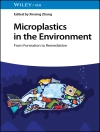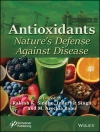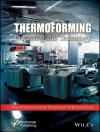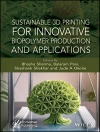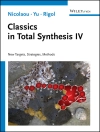Authored by leading experts in the enzymology of natural product biosynthesis, this textbook provides a thorough description of the types of natural products, the biosynthetic pathways that enable the production of these molecules, and an update on the discovery of novel products in the post-genomic era.
Although some 500-600, 000 natural products have been isolated and characterized over the past two centuries, there may be a 10-fold greater inventory awaiting immediate exploration based on biosynthetic gene cluster predictions. The approach of this book is to codify the chemical logic that underlies each natural product structural class as they are assembled from building blocks of primary metabolism.
This text will serve as a reference point for chemists of every subdiscipline, including synthetic organic chemists and medicinal chemists. It will also be valuable to bioinformatic and computational biologists, to pharmacognocists and chemical ecologists, to bioengineers and synthetic biologists.
Cuprins
Major Classes of Natural Product Scaffolds and Enzymatic Biosynthetic Machinery; Polyketide Natural Products; Peptide Derived Natural Products; Isoprenoids/Terpenes; Alkaloids; Purine- and Pyrimidine-derived Natural Products; Phenylpropanoid Natural Product Biosynthesis; Indole Terpenes: Alkaloids II; Carbon-based Radicals in C-C Bond Formations in Natural Products. A. Oxygenases B. Oxygen-dependent Halogenases; S-Adenosyl Methionine: One Electron and Two Electron Reaction Manifolds in Biosyntheses; Natural Product Oligosaccharides and Glycosides; Natural Products Isolation and Characterization: Gene Independent Approaches; Natural Products in the Post Genomic Era
Despre autor
Prof Walsh was on the faculty of MIT and Harvard Medical School and is now affiliated with the Ch EM-H Institute at Stanford University. Yi Tang is a professor of Chemical and Biochemical Engineering, and Chemistry at UCLA. Between them they have published more than 300 research papers on the biosynthesis of the major classes of natural products. Their research groups have deciphered chemical principles and novel enzymes for assembly of polyketides, nonribosomal peptides and posttranslationally modified nascent proteins, oxygenated isoprene scaffolds, peptidyl nucleosides, and fungal alkaloids. Through sequencing of fungal genomes to identify novel biosynthetic gene clusters, heterologous expression in engineered yeast cells, overproduction, isolation and structural assignment, they have identified genes, encoded enzymes, and the structure of novel secondary metabolites in several natural product classes. This broad set of research experience and expertise makes them an ideal pair of authors for Natural Product Biosynthesis: Chemical Logic and Enzymatic Machinery.


